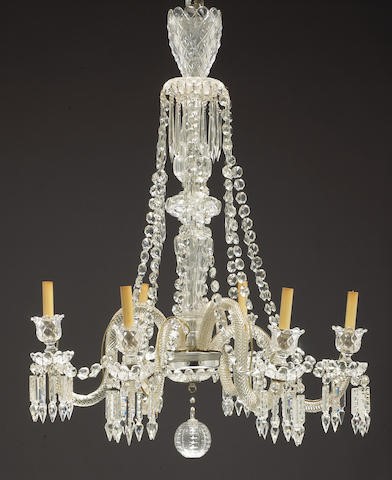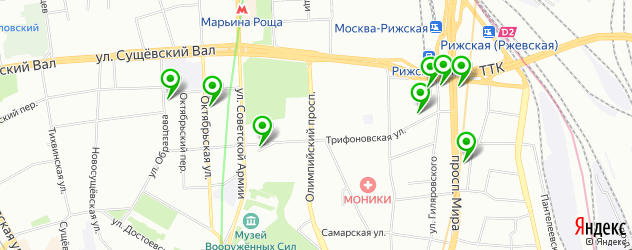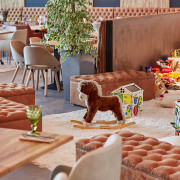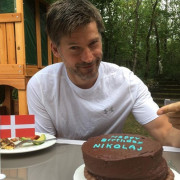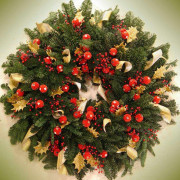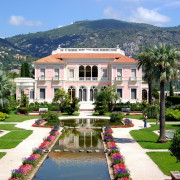Russian cuisine restaurants
Содержание:
- DRINKS in Russia: from Kvas to vodka
- Традиционный русский ресторан – приятные сюрпризы в знакомой атмосфере
- Russian cuisine
- RUSSIAN CUISINE: a kitchen mix that is difficult to define
- Russsian haute cuisine restaurants in Moscow
- Russians MANNERS at lunchtime
- TYPICAL Russian Gastronomy DISHES
- Modern Russian cuisine
- Рестораны русской кухни в Москве
- Cafés and fast food
DRINKS in Russia: from Kvas to vodka
As for drinks, I recommend you try first Kvas, a very mild fermented alcoholic beverage (around 1’2º) and very popular in Russia. There are versions also no alcohol, often of a fruity flavor.
It is a fermented drink based on black bread made with wheat, barley and rye, and to add flavor, you can also add wild fruits. At the time this drink was known as the “Soviet Coca-Cola” for its flavor, color and foam it produces.
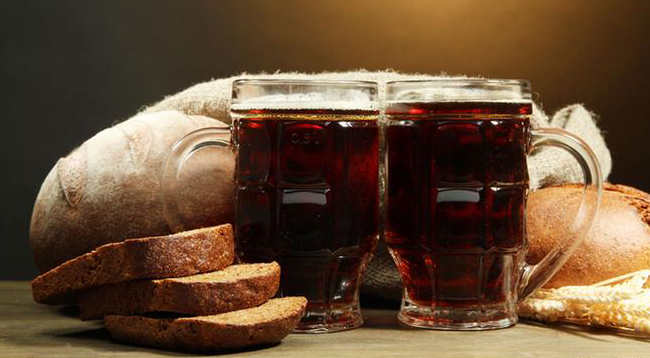
On its part, tea is taken at any time of the day. The most traditional in Russia is black tea. Generally, with sugar and lemon, and without milk, served hot. It is accompanied by pastas or sweets.
As for beer, the most famous is the Baltika brand, based in St. Petersburg, the largest company in Eastern Europe and second European manufacturer. It currently belongs to the Carlsberg group. However, in restaurants you can find beers from all over the world, but at a more expensive price.

Also very noteworthy is kefir, a fermented drink based in milk (drinkable yogurt).
And what about vodka? Russians do not mix it or serve it with ice, though the bottle is put in the fridge. It is accompanied by food: pickles, herring, etc. It is served in small glasses.

And wine? You will find good wines in restaurant menus that come from Crimea or the Caucasus (Georgia, Armenia, etc.), with a predilection for sweet wines. Good restaurants also have wines from around the world in their menus.
Традиционный русский ресторан – приятные сюрпризы в знакомой атмосфере
Приезжая в любую страну мира, турист, кроме всего прочего, обязательно знакомится с кулинарными традициями и пробует классические блюда. Сегодня для того, чтобы совершить в некотором роде кулинарное путешествие, совсем не обязательно покупать билет на самолет, достаточно будет выбрать страну и подобрать подходящий ресторан. Развернуть
Распространение русской кухни по всему миру просто поражает – она находит своих почитателей в самых отдаленных уголках. Она очень разнообразна и включает огромное количество блюд, которые создавались на протяжении длительных исторических периодов. Хотя долгое время в Европе русскую кухню совсем не признавали – считали варварской и грубой, сегодня ресторанов с русской традиционной кухней столько же, сколько и с европейской.
Russian cuisine
 Russian blinisa Russian pancake traditionally made from wheat or buckwheat flour, caviar, soups and pies are well-known all over the world. Whilst these dishes are among Russia’s gastronomical highlights, this list is far from exhaustive. Russian cuisine is varied and rich in flavour. Restaurants are of excellent quality in Moscow; it is no coincidence that three of Moscow’s restaurants were ranked among the world’s top restaurants in 2016 (The World’s 50 Best Restaurants). These are: White Rabbit, Twins and Chestnaya KukhnyaRussian: Честная кухня (Honest Cuisine). Interestingly, all of them specialize in Russian cuisine.
Russian blinisa Russian pancake traditionally made from wheat or buckwheat flour, caviar, soups and pies are well-known all over the world. Whilst these dishes are among Russia’s gastronomical highlights, this list is far from exhaustive. Russian cuisine is varied and rich in flavour. Restaurants are of excellent quality in Moscow; it is no coincidence that three of Moscow’s restaurants were ranked among the world’s top restaurants in 2016 (The World’s 50 Best Restaurants). These are: White Rabbit, Twins and Chestnaya KukhnyaRussian: Честная кухня (Honest Cuisine). Interestingly, all of them specialize in Russian cuisine.
Soups (in particular, ukhaa clear Russian soup, made from various types of fish and shchia Russian style cabbage soup), cereals, potato dishes and baked goods (bread, pies and blinis) form the basis of Russian cuisine. Other typical Russian foods include pickled vegetables and mushrooms. Honey and jams are traditional Russian desserts. Among traditional beverages are morsberries cooked in a large volume of sugared water, kompotfruits cooked in water, kvasa beverage made from rye bread and malt, 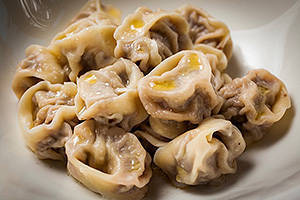 sbitenbeverage made from honey and herbs, kisela starch- or grain-based sweet beverage, as well as fermented milk drinks, such as kefir, ryazhenka and prostokvasha. Fish and meat dishes (except for horse meat) are also widespread in Russian cuisine. Meat is usually finely minced (such as pelmenidumplings consisting of a filling wrapped in thin, unleavened dough). Caviar often comes up when talking about Russian cuisine, but it is, in fact, a delicacy; in Russia, it is not consumed daily, but rather on special occasions. Black caviar from sturgeon is the most expensive variety of caviar, and very few can afford it.
sbitenbeverage made from honey and herbs, kisela starch- or grain-based sweet beverage, as well as fermented milk drinks, such as kefir, ryazhenka and prostokvasha. Fish and meat dishes (except for horse meat) are also widespread in Russian cuisine. Meat is usually finely minced (such as pelmenidumplings consisting of a filling wrapped in thin, unleavened dough). Caviar often comes up when talking about Russian cuisine, but it is, in fact, a delicacy; in Russia, it is not consumed daily, but rather on special occasions. Black caviar from sturgeon is the most expensive variety of caviar, and very few can afford it.
Vodka, an alcoholic drink usually associated with Russia, did indeed originate here. It was, however, never the main drink of choice in Russia. Instead, peasants preferred low alcohol drinks with a maximum alcohol content of 3% to 5%, such as mead, home brew and beer. The term vodka initially referred to a medicinal herbal tea.
Today, many restaurants in Moscow specialize in Russian cuisine, falling into several categories as listed below.
RUSSIAN CUISINE: a kitchen mix that is difficult to define
Russian cuisine does not have the international reputation that other cuisines have, but the truth is that Russia has a long and rich culinary history, with many influences from the cuisine of other Russian regions, former Soviet republics or French cuisine.
Despite this, Moscow and St. Petersburg are experiencing a gourmet modernization of their gastronomic offer. There are more and more haute cuisine restaurants that are gaining international recognition, and this attracts travelers wanting to try a meal out of the ordinary and the truth is that many diners return home surprised and very satisfied.
When I travel to a foreign country, one of the first things I like to know is which is the typical food and drink of the place, which are the open hours, what is the usual tip to leave or what are the most popular local products, and manners at lunchtime. I also like to know the type of restaurants that I will find, both fast-food Russian chains and mid-range and high-end restaurants.
In this article I will tell you about all these aspects applied to Russian gastronomy.
Russsian haute cuisine restaurants in Moscow
 In these restaurants, famous chefs experiment with traditional Russian dishes or, on the contrary, cook classic Russian recipes to perfection. The average bill exceeds 2,500 RUB. The interiors and the atmosphere prevailing in these restaurants complement the food, and are an attraction in and of themselves.
In these restaurants, famous chefs experiment with traditional Russian dishes or, on the contrary, cook classic Russian recipes to perfection. The average bill exceeds 2,500 RUB. The interiors and the atmosphere prevailing in these restaurants complement the food, and are an attraction in and of themselves.
The best-known Russian haute cuisine restaurant in Moscow is, arguably, Café PushkinRussian: Кафе Пушкинъ, located in an old mansion at 26A, Tverskoy BoulevardRussian: Tverskoy bulvar or Тверской бульвар, in downtown Moscow. The restaurant’s interior recreates the atmosphere of an old aristocratic building, and its menu offers pelmeni, rasstegaysopen pies, traditional soups and Russian saladcalled in Russia olivie or оливье, reviving the culinary traditions of imperial Russia. When serving some of the dishes and beverages, waiters recite poems by Alexander Pushkin. With every new season come “gastronomic premieres”, during which the chef presents new dishes. The menu is available in English, French and Chinese. A staff member keeps an eye on children if they wish to play in the playground area. This restaurant is one of the priciest in Moscow, but you can certainly have breakfast here at a relatively reasonable price. Café Pushkin also has a sister restaurant in Paris.
 White Rabbit (3, Smolenskaya SquareRussian: Smolenskaya ploschad or Смоленская площадь) is the exact opposite of Café Pushkin in terms of interior design. It is situated on the 16th floor, right under the glass dome of the Smolensky PassazhRussian: Смоленский пассаж Complex across from one of the seven Stalinist skyscrapersMuscovites call them Vysotki or Stalinskie Vysotki, the Ministry of Foreign AffairsRussian: Ministerstvo inostrannykh del or Министерство иностранных дел main building. The restaurant is full of light and has small, soft sofas styled to the decor of various historical periods. In recent years, White Rabbit has been listed in The World’s 50 Best Restaurants. The chef, Vladimir Mukhin, has an entirely different spin of traditional Russian dishes (try borshtcha sour soup popular in several Eastern European cuisines with fried crucians, baked bean and turnip chips or fir-needle icecream) and opens every new season with a tasting menu, with new combinations of delicacies for you to try.
White Rabbit (3, Smolenskaya SquareRussian: Smolenskaya ploschad or Смоленская площадь) is the exact opposite of Café Pushkin in terms of interior design. It is situated on the 16th floor, right under the glass dome of the Smolensky PassazhRussian: Смоленский пассаж Complex across from one of the seven Stalinist skyscrapersMuscovites call them Vysotki or Stalinskie Vysotki, the Ministry of Foreign AffairsRussian: Ministerstvo inostrannykh del or Министерство иностранных дел main building. The restaurant is full of light and has small, soft sofas styled to the decor of various historical periods. In recent years, White Rabbit has been listed in The World’s 50 Best Restaurants. The chef, Vladimir Mukhin, has an entirely different spin of traditional Russian dishes (try borshtcha sour soup popular in several Eastern European cuisines with fried crucians, baked bean and turnip chips or fir-needle icecream) and opens every new season with a tasting menu, with new combinations of delicacies for you to try.
Other upmarket Russian restaurants are located in Moscow’s renowned five-star hotels, including 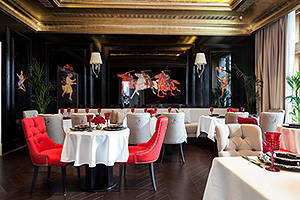 Balchug Kempinsky MoskvaRussian: Балчуг Кемпински Москва (located in the same-name hotel), Caffe Russe (in Ritz CarltonRussian: Ритц-Карлтон) and VerandaRussian: Веранда (in Radisson Royal UkrainaRussian: Рэдиссон Ройял Украина). SAVVA, a restaurant newly opened in the hotel MetropolRussian: Метрополь, has become widely popular among Muscovites. You can also sample Russian dishes at Bystro, a restaurant located on the premises of the Four Seasons hotel, while enjoying the views of the Kremlin, or at Dr. ZhivagoRussian: Dr. Живаго (in Hotel NationalRussian: Националь). The hotel SavoyRussian: Савой has an eponymous restaurant which is worth a visit.
Balchug Kempinsky MoskvaRussian: Балчуг Кемпински Москва (located in the same-name hotel), Caffe Russe (in Ritz CarltonRussian: Ритц-Карлтон) and VerandaRussian: Веранда (in Radisson Royal UkrainaRussian: Рэдиссон Ройял Украина). SAVVA, a restaurant newly opened in the hotel MetropolRussian: Метрополь, has become widely popular among Muscovites. You can also sample Russian dishes at Bystro, a restaurant located on the premises of the Four Seasons hotel, while enjoying the views of the Kremlin, or at Dr. ZhivagoRussian: Dr. Живаго (in Hotel NationalRussian: Националь). The hotel SavoyRussian: Савой has an eponymous restaurant which is worth a visit.
GusyatnikoffRussian: Гусятникоff is yet another popular Russian restaurant, established by well-known Russian restaurateur Arkady Novikov, who also manages restaurants in London and Dubai. The restaurant is located in a mansion at 2a, Aleksandra Solzhenitsyna StreetRussian: ulitsa Aleksandra Solzhenitsyna or улица Александра Солженицына. Its interior is styled to look like a 19th-century mansion. A playground is available for kids. Another haute cuisine 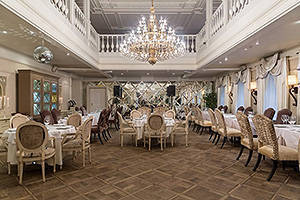 restaurant, managed by Arkady Novikov, Bolshoi, is worth mentioning. As its name suggests, it is located a short distance from the Bolshoi TheatreRussian: Bolshoy teatr or Большой театр. Russian-style tea parties take place here daily from 3:00 am to 7:00 pm. Here, you can try affordable and delicious Russian pies and other bakery products in a setting decorated with original works by modern European painters and sculptors.
restaurant, managed by Arkady Novikov, Bolshoi, is worth mentioning. As its name suggests, it is located a short distance from the Bolshoi TheatreRussian: Bolshoy teatr or Большой театр. Russian-style tea parties take place here daily from 3:00 am to 7:00 pm. Here, you can try affordable and delicious Russian pies and other bakery products in a setting decorated with original works by modern European painters and sculptors.
When speaking of upmarket restaurants, Anatoly Komm for Raff House is definitely worth a mention. Ultramodern Russian dishes feature on the menu, but there is a variety of other dishes on offer as well. Chef Anatoly Komm has been recognised in Russia and beyond.
Russians MANNERS at lunchtime
2.1. What meals do Russians cook?
Russians begin the day with a breakfast called zavtrak, which can take kasha (a kind of milk porridge and rice cereals or wheat semolina) or bread with butter. Some also have a stronger breakfast that includes sausages, eggs, bread, etc.
The second meal is the obied and is made at noon (about 1:00 p.m. or later) and is the main meal of the day, which includes starter, main course and dessert.
The last meal of the day is made from 19:00 hours, they call it uzhin and it is considered a kind of dinner, which usually does not include soup or dessert.
Most dishes are accompanied with rye bread. They are very fond of sour cream, called smetana, present in many dishes. As a starter they almost always have a soup and for dessert they are very fond of drinking black tea with lemon (which they drink at all hours) along with some candy.
They also use a lot of tvorog, a dairy product, made with whipped cheese, with a creamy and white texture, which is made with cow’s milk.
And what about Russian caviar? There is red (salmon) and black (beluga, sturgeon or sevruga). Regarding the latter, the best and most expensive is that of beluga, and you will only find it in fancy restaurants or in some stores.
At home it is normal to eat the red caviar, the economic one. In Russian homes it is taken on top of a slice of white bread and butter. It also appears in many dishes, such as blinis (similar to crepes). Black caviar, on the other hand, is reserved for special occasions (Christmas, special celebrations, etc.)

2.2. Russian cuisine tours
If you want to delve fully into the gastronomy, some agencies organize gastronomic tours, so you can get to know Russian cuisine and local products better.
For example, a gastronomic tour is organized in Moscow to taste the typical Russian dishes by visiting three restaurants. A gastronomic tour is also organized to try the typical Russian products, in local markets such as the Danilovsky market or a tour to enjoy the typical Russian drinks: Russian vodka, Russian craft beer or Nastoika.
Another option is to enjoy a traditional Russian meal in a centric Moscow monastery, or even take some cooking classes with a local family.
In short, the possibilities are varied. Choose the one that best suits your tastes.

TYPICAL Russian Gastronomy DISHES
3.1. The starters: from Borscht to Russian salad
The Soups
A very peculiar and distinctive element of the Russians is that they eat soup throughout the year. It is almost always the first dish or starter preferred before any meal.
Soups are rich and caloric, to fight the cold in winter. One of the most famous is the Shchi, made of potato, cabbage and meat. It also highlights the Borscht, which is also typical in Ukraine, but very popular in Russia, which has vegetables and beets that give it a very intense red color.
There are also lighter soups such as Solyanka or Ukha (fish soup). But there are also cold soups like Okroshka, with vegetables, potatoes and Kvas.

Russian Food
Salads can also open food. The Russian salad is called Olivier salad. Its name is due to the chef of French origin who popularized it. It is almost always part of the New Year’s Eve menu.
There is another very popular salad called “Herring under a fur coat”, made with herring covered with potatoes, beets, carrots, eggs and mayonnaise.

3.2. The main meals: from Stroganoff to blinis
Meats
Stroganoff is one of the most typical dishes of Russian cuisine and you can find it in almost every restaurant. It is a meat dish with diced beef, accompanied with mushrooms, onions and sour cream sauce, served on rice or pasta.

The Shashlik is a roast skewer dish that is very popular in Russia, the Caucasus and Central Asia. Its name varies by country: Mtsvadi in Georgia, Khorovats in Armenia and Khebab in Azerbaijan.
The Russians are very fond of making these skewers on outdoor barbecues in parks when there is good weather.
In Russia, dishes with steaks and different types of stuffed meat are also very common.

Fishes
As for fish, the Russians mainly take salmon, trout, herring and cod. The garnish of these dishes is usually with potatoes (boiled, fried or pureed). Also sometimes sour cream or smetana is added.

They also take the Koryushka, small fish, typical of the seas of northern Europe and the mouths of rivers such as the Neva. They are taken fried, lightly battered and with sauces. It is a typical and essential dish in St. Petersburg.

Pastas and patties
This type of dishes usually likes both children and adults. First of all, I would highlight the Pelmeni, similar to ravioli and stuffed with meat (either veal, pork or lamb). They are accompanied by smetana or butter. In the English language menus of Russian restaurants, you may find them as Dumplings.
Another version of the Pelmeni are the Varenyky, which are larger and with other types of fillings: vegetables, cabbage, potatoes or mushrooms. They go with any sauce; you can even make sweets with cherry filling.

Golubtsy, or cabbage rolls stuffed with different products, are also very common in restaurant menus.

Also worth noting are buns such as pirozhki, pirogi or kulebiaka. They can be stuffed with cabbage, meat, fish or potatoes, but they can also be sweet (jam, apple or plums). They are often snacks and have different sizes. It is good to know the ingredients beforehand.
Very popular are blinis, a kind of crepes that are served with butter, smetana, jam, honey, red or black caviar, even stuffed with meat, sweet ham, cheese, potatoes, mushrooms, apples, strawberries, etc, or with various mixtures.

Finally, to vary a little, I would recommend you try the Khachapuri, Georgia’s national food. It is a pizza bread dough stuffed with cheese, egg and other various ingredients.

3.3. Desserts
Russians love desserts and therefore have a wide variety of cakes and sweets.
Prianiki are gingerbread candies, commonly with honey, but also with chocolate or stuffed with jams of various flavors.
The blinis mentioned above can also be served as dessert, depending on what they wear.
There are also desserts such as baked apple and other desserts with this base ingredient, such as Ptasie mleczko (or bird’s milk).
Other desserts to highlight are the pastila or fruit paste, the kasha guriev (almost without flour), the Tula gingerbread, the medovik (or honey and cream pie) and the Napoleon, a kind of millefeuille.

Modern Russian cuisine
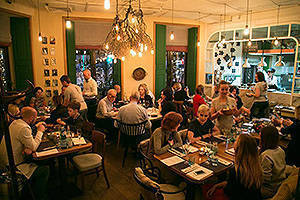 These restaurants are mostly run by Moscow’s renowned chefs. For example, Twins (13, Malaya Bronnaya StreetRussian: Malaya Bronnaya ulitsa or Малая Бронная улица) is owned by the twin brothers Berezutsky, hence its name. Highlights of this rather pricy restaurant are include the tableware and originality of the recipes. Take, for instance, dynamite-shaped desserts and venison tartare smoked over birch bark.
These restaurants are mostly run by Moscow’s renowned chefs. For example, Twins (13, Malaya Bronnaya StreetRussian: Malaya Bronnaya ulitsa or Малая Бронная улица) is owned by the twin brothers Berezutsky, hence its name. Highlights of this rather pricy restaurant are include the tableware and originality of the recipes. Take, for instance, dynamite-shaped desserts and venison tartare smoked over birch bark.
Another project launched by the White Rabbit Group, Selfie (31, Novinsky BoulevardRussian: Novinskiy bulvar or Новинский бульвар) is centered around its young and talented chef Anatoly Kazakov. The kitchen is located in the middle of the hall, transforming the restaurant into a sort of gastronomic theatre overlooking the old Moscow and the Garden RingRussian: Sadovoe koltso or Садовое кольцо. Respect for traditional cuisine fused with modern cooking and use of seasonal products of Russian origin underpin the Selfie concept.
 Chestnaya KukhnyaRussian: Честная кухня (10, Sadovaya-Chernogryazskaya StreetRussian: Sadovaya-Chernogryazskaya ulitsa or Садовая-Черногрязская улица) is yet another restaurant run by a chef. Sergey Yeroshenko defines it as a gastronomic restaurant specializing in modern Russian cuisine. The chef handles seasonal farm produce, and fowl, deer and duck dishes are also on the menu. Both Twins and Chestnaya Kukhnya figure among the world’s top 100 restaurants (according to The World’s Best Restaurants in 2016).
Chestnaya KukhnyaRussian: Честная кухня (10, Sadovaya-Chernogryazskaya StreetRussian: Sadovaya-Chernogryazskaya ulitsa or Садовая-Черногрязская улица) is yet another restaurant run by a chef. Sergey Yeroshenko defines it as a gastronomic restaurant specializing in modern Russian cuisine. The chef handles seasonal farm produce, and fowl, deer and duck dishes are also on the menu. Both Twins and Chestnaya Kukhnya figure among the world’s top 100 restaurants (according to The World’s Best Restaurants in 2016).
The owner of Chestnaya Kukhnya also runs a market and Fedya, DichRussian: Федя, дичь Café, both located at the Danilovsky marketRussian: Danilovskiy rynok or Даниловский рынок (74, Mytnaya StreetRussian: Mytnaya ulitsa or Мытная улица). Here, you can buy fresh products and then have them cooked on the spot. Meat, poultry and fish dish options are available and you can get free recipes from the chef.
The butcher shop and restaurant VoronezhRussian: Воронеж (4, Prechistenka StreetRussian: ulitsa Prechistenka or улица Пречистенка) operates on a similar idea. On the first floor of the four-storey mansion are the butcher shop and a snack bar, on the second floor is Voronezh, a restaurant offering specialties from Russian regions, and the restaurant Myasnoy KlubRussian: Мясной клуб is located on the third floor.
 EkspeditsiyaRussian: Экспедиция, an unusual restaurant specializing in Northern Russian cuisine, is situated in an historic area known as Kitay-gorodRussian: Китай-город (6, Pevchesky LaneRussian: Pevcheskiy pereulok or Певческий переулок). This restaurant was established by travellers who gather recipes during their expeditions and are thus able to acquaint Muscovites with the traditional dishes of different peoples inhabiting Russia. Here you can try stroganinaa dish of the indigenous people of northern Arctic Siberia consisting of raw, thin, long-sliced frozen fish, or Russian sushi, rare gourmet fish (omul, sockeye), and much more. The menu offers a wide variety of hot deer and fowl dishes, soups, desserts and sauces made with berries from the North of Russia. The restaurant’s interior features crudely built furniture, animal skins and pines growing towards the ceiling. In the corner of the main hall is an authentic MI-2 helicopter. The restaurant has a special kids’ menu and holds classes for kids on weekends.
EkspeditsiyaRussian: Экспедиция, an unusual restaurant specializing in Northern Russian cuisine, is situated in an historic area known as Kitay-gorodRussian: Китай-город (6, Pevchesky LaneRussian: Pevcheskiy pereulok or Певческий переулок). This restaurant was established by travellers who gather recipes during their expeditions and are thus able to acquaint Muscovites with the traditional dishes of different peoples inhabiting Russia. Here you can try stroganinaa dish of the indigenous people of northern Arctic Siberia consisting of raw, thin, long-sliced frozen fish, or Russian sushi, rare gourmet fish (omul, sockeye), and much more. The menu offers a wide variety of hot deer and fowl dishes, soups, desserts and sauces made with berries from the North of Russia. The restaurant’s interior features crudely built furniture, animal skins and pines growing towards the ceiling. In the corner of the main hall is an authentic MI-2 helicopter. The restaurant has a special kids’ menu and holds classes for kids on weekends.
Рестораны русской кухни в Москве
Лучшие рестораны Москвы с русской кухней собраны на сайте GetTable – самом популярном ресурсе для быстрого бронирования столов. Ознакомиться с перечнем и подобрать подходящее по расположению и ценовой политике заведение можно всего лишь одним нажатием кнопки и список ресторанов русской кухни в Москве перед вашими глазами.
Изначально русская кухня не могла похвастаться большим разнообразием блюд, что было обусловлено ее разделением на постную и не постную. В силу особенностей православного календаря, дней для поста намного больше, а поэтому и преобладали блюда из грибов, ягод и круп.
Рестораны русской кухни Москвы с уважением относятся к кулинарным традициям, а поэтому большое внимание уделяется супам или «хлебовам», как их называли раньше. Немыслимы рестораны русской кухни без кислых щей, о которых по сей день ходят легенды
Блины, пироги, черный хлеб, пряники, уха, разнообразные каши – все это неотъемлемый элемент русской кухни. Сегодня ресторан русской кухни может иметь разную направленность: в некоторых заведениях русская кухня является лишь частью меню наряду с другими, в некоторых – основной. Так обстоит дело и с оформлением зала, и со стилем обслуживания. Несмотря на выбранную концепцию, ресторан с русской кухней – это заведение, в котором главенствует дружественная атмосфера и вкусная еда.
Подобрать ресторан с традиционной или современной русской кухней можно с помощью ресурса GetTable. Русский ресторан обязательно порадует своего гостя, если последний заранее будет знать, куда идет — для этого и создан ресурс. Подробные фотографии, многочисленные отзывы и лучшая система моментального бронирования столиков – GetTable станет лучшим помощником в организации отдыха в ресторане русской кухни в Москве. Свернуть
Cafés and fast food
 Chain restaurants are the most numerous in this category, and the average bill is 300 to 1000 RUB. The most popular are Mu-muRussian: Му-му and Yolki-PalkiRussian: Ёлки-Палки. These restaurants have rural style interiors, and their menus offer everyday Russian food, the type served regularly in any modern Russian family. With its 38 free-flow self-service cafés, Mu-mu is the most extensive café network in Moscow.
Chain restaurants are the most numerous in this category, and the average bill is 300 to 1000 RUB. The most popular are Mu-muRussian: Му-му and Yolki-PalkiRussian: Ёлки-Палки. These restaurants have rural style interiors, and their menus offer everyday Russian food, the type served regularly in any modern Russian family. With its 38 free-flow self-service cafés, Mu-mu is the most extensive café network in Moscow.
Yolki-Palki offers table service and has 11 cafés. It has an open buffet called TelegaRussian: Телега, where visitors can treat themselves to an all-you-can-eat buffet lunch at a reasonable price. The self-service GrabliRussian: Грабли café chain (10 locations) features landscape design, with artificial flowers, trees, benches and so on.
The Kroshka-kartoshkaRussian: Крошка-картошка fast food restaurants are available throughout the city (some 200 locations). They are mostly located near metro stations and in the food courts inside shopping malls. The average bill is about 200 RUB, making Kroshka-kartoshka the cheapest of all Russian restaurants in Moscow. The company’s specialty is foiled whole potatoes with fillings (cheese, fresh herbs, pickled mushrooms and salads). Blini, or traditional Russian pancakes, is the specialty of another public catering facility, TeremokRussian: Теремок (280 locations). The owners label their restaurants as “fast casual” instead of blatantly “fast food”. Many cafés are located in the vicinity of popular tourist destinations (ArbatRussian: Арбат, Cathedral of Christ the SaviourRussian: Khram Khrista Spasitelya or Храм Христа Спасителя, Maroseyka StreetRussian: ulitsa Maroseyka or улица Маросейка, etc.). The menu offers blinis, soups, salads, porridges, pelmenis, cottage cheese pancakes, fruit drinks, kvas and original specialties such as blinburger. Average bill: 400 RUB.
Tags: moscow restaurants
How interesting and useful was this article for you?
